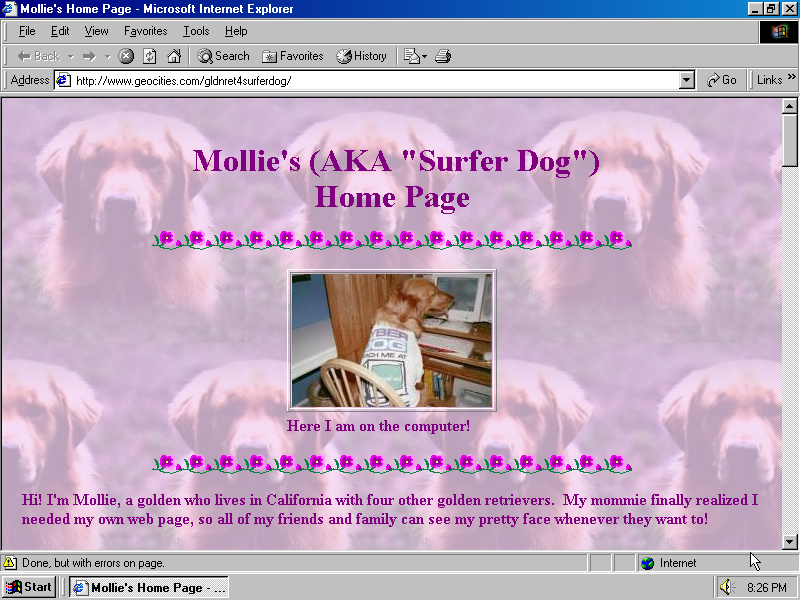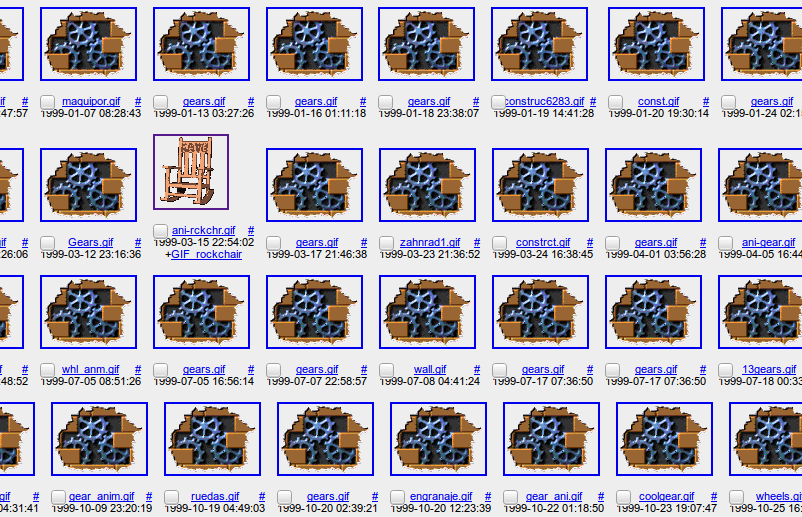My name is Flash and I am a dog. . . . To be more precise, I am a Boxer. . . . With time I’ll make this page more colourful (who said we see in B&W!!??) and interesting.
—Flash, a Boxer, June 19, 1999, Heartland/Pointe/9855/

As media scholar Ethan Zuckerman pinned it in 2008: “Web 1.0 was invented to allow physicists to share research papers. Web 2.0 was created to allow people to share pictures of cute cats.”1
Zuckerman is not only a scholar and activist but also an entrepreneur who built one of the first free web hosting services, Tripod. So he could be the first one to testify that the web, which we retroactively call Web 1.0, was re-purposed very, very early; even physicists themselves started to use Hypertext Markup Language (HTML) to not only to reference or edit each other papers, but also to make personal web pages, to share their passions and lives with the world out there. That world was getting bigger at an unprecedented pace, sucking more and more people into a whirlwind of “welcome to my page,” “under construction,” and “sign my guestbook.”
What is indeed stunning is the fact that cats, which later became a front-running symbol of the online world, played only a small role in early web culture.
There was a gif of Felix the Cat walking back and forth in the bottom of many pages. There was “paper cat” coming out from the inner side of the browser2. There were decorative kitten graphics. There were pages that people made about their cats, sure, but you simply cannot compare it with the amount and quality of pages made for dogs.
At this moment there are 451 pages in GeoCities archive3 that I’ve tagged “dog.”4 While some of them are pages of breeders and dog rescue organizations, the majority are the websites made by happy owners of little pupppies; by proud friends of big and small, well- educated and spoiled- rotten Pugs, Retrievers, Beagles, Vizslas, and so on…; and by inconsolable families of dogs that have passed away. I collect tThe most spectacular ones I collected into a constantly updated series called On the Internet Everybody Knows You Had a Dog.5
- Ethan Zuckerman, “The Cute Cat Theory Talk at Etech,” . . . My heart’s in Accra (blog), March 8, 2008 [↩]
- an example of performative restoration by Tara Donovan-Achi, in 2016 a student of my course Traditions and Revoluions in Web Design at Merz Akademie [↩]
- The GeoCities archive, also known as One Terabyte Of Kilobyte Age, is a copy of roughly 382,000 home pages that a group called Archive Team rescued in a quickly coordinated initiative in 2009, just before Yahoo! removed all of GeoCities from the web. This 1TB data dump was distributed via the piracy site The Pirate Bay. In 2013, my partner Dragan Espenschied and I finished the restoration of the site. See Dragan Espenschied, “A City Rebuilt,” April 6, 2013, [↩]
- I wrote this in September 2017 after looking at 110,000 GeoCities home pages in chronological order of their last update, reaching as far as July 25, 2001. As of 21st of September 2019 there are 742 dog pages. [↩]
- The title is an allusion to Peter Steiner’s famous cartoon published in The New Yorker on July 5, 1993, captioned “On the Internet, nobody knows you’re a dog.” [↩]

